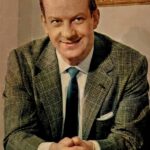Table of Contents
Who was Alberto Arenas
Alberto Arenas, born Tomas Guida on September 25, 1910, in the Abasto neighborhood of Buenos Aires, emerged as a distinguished Argentine tango singer in the 1930s. In 1936, amid radio performances, he graced stages with Alberto Pugliese’s orchestra at the Rural exhibition in Palermo and the Cabaré D’Azur.
By 1939, he joined Mario Rocha’s orchestra, singing on LR3 Radio Belgrano. Using the pseudonym Alberto Guida, a name coined during encounters with Canaro, he found himself singing tangos like “Dicen que dicen” and “Pan,” ultimately leading to Canaro’s swift hiring in 1945.
Adios, Pampa Mia
Alberto’s life-changing moment came in 1945 when he premiered the iconic tango “Adiós pampa mía” in the musical work “El tango en París,” a collaboration with Canaro and Ivo Pelay.

“Adios Pampa Mía” is often considered one of the 10 most played tangos, a tune which has become popular beyond the realms of Tango.
While the tango by nature is a phenomenon of the big cities Buenos Aires and Montevideo, describing urban life in the “arrabales”, the traditional neighborhoods or the fancy city centers, this particular song references the Argentine Pampa. This vast geographic region was the source of the enormous wealth of Argentina in the first half of the 20th century.
While “Milongas Camperas” is a well-established genre in Argentina music the Tango Campero “Pampa Mía” represents a quite unique blend of Tango Music with rural folklore elements. Combined with a captivating melody and Alberto Arena´s interpretation it represents an essential part of Tango heritage.
Life After “Pampa Mía”
The 1950s witnessed collaborations with Pedro Quartucci in the film “La tía de Carlos” (1951), where he sang “Sin embargo no estoy triste.” As Canaro’s orchestra moved to LR1 Radio El Mundo in the same year, performances at the Glostora Tango Club and a Brazilian tour ensued. In 1954, performances on LR4 Radio Splendid and tours across provinces like Córdoba, Rosario, and Salta solidified his influence.
In 1956, Alberto Arenas parted ways with the Canaro orchestra, forming a quartet with Vicente Florentino until 1960. A hiatus followed as he embraced a different rhythm working as a taxi driver until 1970. The year 1975 marked his return in Mar del Plata at the venue “El túnel,” and in 1976, he recorded for the TK label with Enrique Mora’s quartet. The international stage beckoned in 1980, with a successful fifteen-day performance in Colombia alongside Roberto Maida and Ernesto Famá.
Alberto bid adieu to the world on January 12, 1988, at the age of seventy-seven, leaving behind a legacy that continues to echo through the passionate rhythms of Argentine tango.
Top 10 Most Important Tango Songs by Alberto Arenas
- “Adiós pampa mía”
- Recording Year: 1945
- Orchestra: Canaro and Ivo Pelay
- Details: Premiered in the musical work “El tango en París,” this iconic tango continues to captivate dancers with its evocative melody and timeless appeal.
- “Parece mentira”
- Recording Year: 1949
- Details: Recorded during his participation in the comedy “Con la música en el alma,” this song showcases Alberto Arenas’ versatility and emotional depth.
- “Sin embargo no estoy triste”
- Film: “La tía de Carlos” (1951)
- Details: Featured in the film with Pedro Quartucci, this emotionally charged piece resonates with tango enthusiasts for its poignant lyrics and memorable composition.
- “No llores nunca más”
- Details: Part of the musical work “El tango en París,” this waltz adds a touch of elegance to Arenas’ repertoire, showcasing his ability to interpret diverse tango styles.
- “Niebla”
- Details: Another tango from “El tango en París,” “Niebla” exemplifies the depth and emotional range present in Alberto Arenas’ performances.
- “Serafín y Julia Paz”
- Details: A lively milonga from the same musical work, this piece adds a rhythmic dimension to Arenas’ contribution to the tango scene.
- “Pan”
- Details: Sung during his early collaboration with Canaro, “Pan” demonstrates the rich musical landscape that Arenas contributed to during his formative years.
- “Noche de reyes”
- Recording Year: 1976
- Orchestra: Enrique Mora’s quartet
- Details: Recorded in collaboration with Enrique Mora’s quartet, “Noche de reyes” showcases Arenas’ enduring passion for tango, even in his later years, and remains a favorite among dancers for its melodic charm.
Frequently Asked Questions about Alberto Arenas
What led to Alberto Arenas’ temporary retirement in 1960?
Alberto took a hiatus from music in 1960 and worked as a taxi driver before returning to the stage in 1975.
Did Arenas have a pseudonym, and how did it come about?
Yes, he used the pseudonym Alberto Guida early in his career. The name was given by Canaro, who encountered a herdsman with the name Alberto Guida during a play. This pseudonym became an integral part of his artistic identity.
How did Alberto Arenas contribute to the film industry?
In the 1950s, he collaborated with Pedro Quartucci in the film “La tía de Carlos” (1951), where he sang “Sin embargo no estoy triste.” This venture showcased his versatility, extending his influence beyond the musical realm.
What notable collaborations did Alberto undertake in his later years?
In 1980, he traveled to Colombia with Roberto Maida and Ernesto Famá, performing successfully for fifteen days. Additionally, in 1976, he recorded for the TK label with Enrique Mora’s quartet, showcasing his continued dedication to the art of tango.
Notable Sources
- Sucesos Semanales. “Biografía de Alberto Arenas.” Archivado desde el original el 9 de noviembre de 2004. Consultado el 26 de febrero de 2014.
- TodoTango. “Alberto Arenas.” Archivado desde el original el 4 de marzo de 2014. Consultado el 26 de febrero de 2014.






